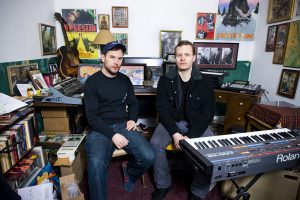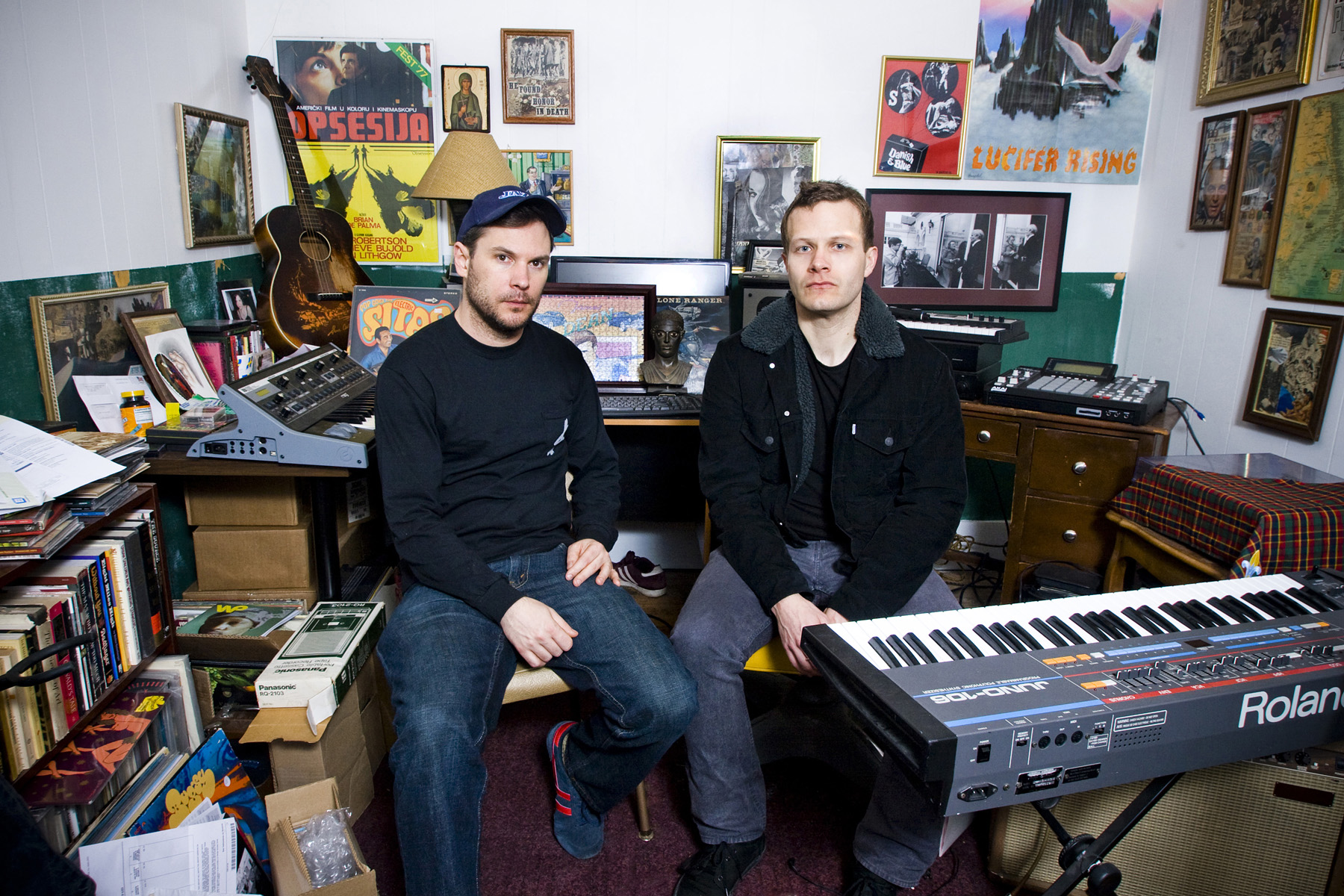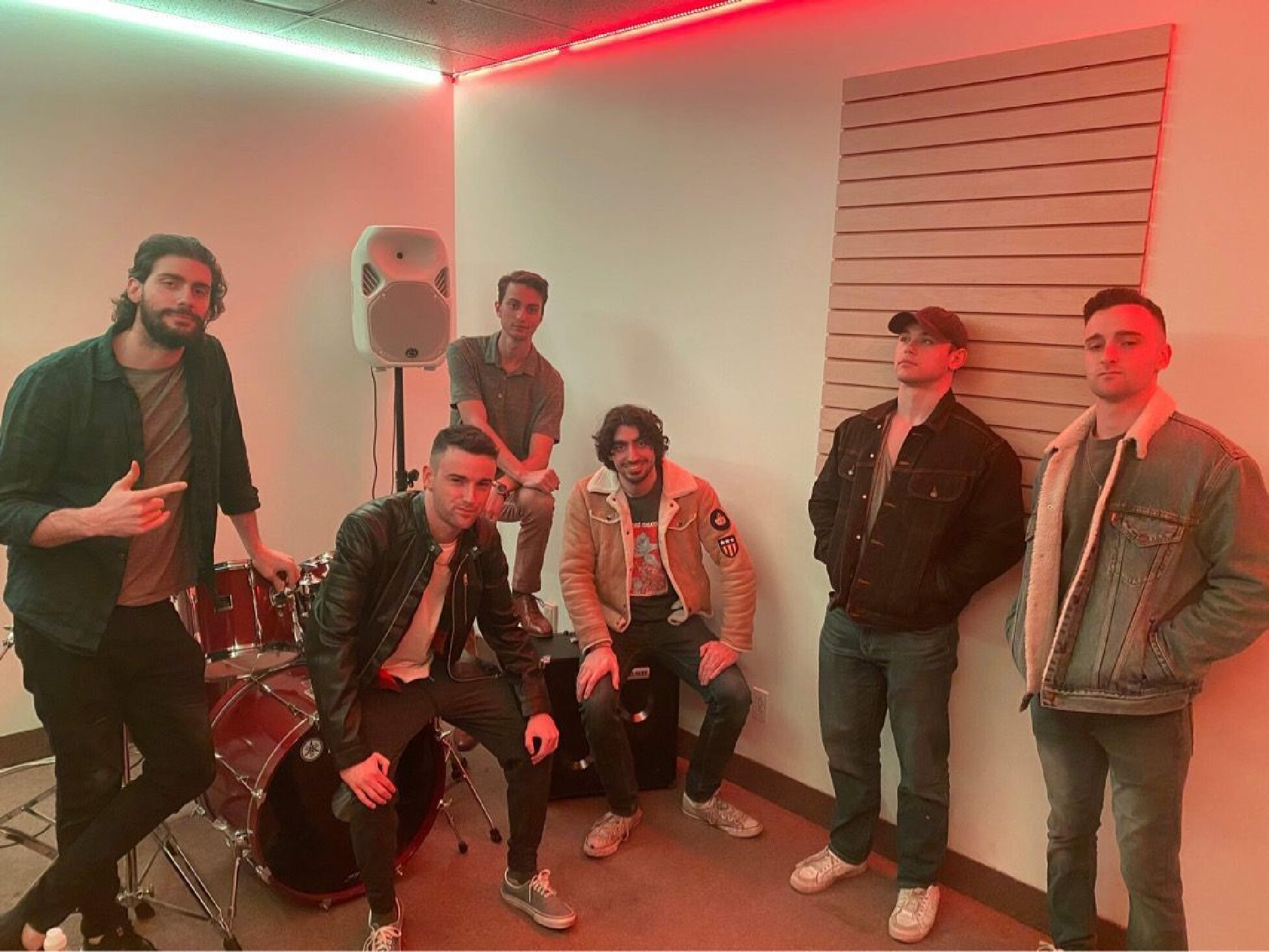Don’t let the charming decadence of the name Lilacs & Champagne seduce you into thinking that tuning in will be an easy listening experience – on the contrary, indulging in the sample-heavy duo’s product provides the listener with some of the dankest, impurest stuff on the market today.

“The friendliness of the name helped sell us on it, because that’s kind of what its not,” said Emil Amos, partner in crime of Alex Hall, who comprise the duo. “It’s trying to slip a pill into your drink – you’re drinking this saccharine thing, but there’s an insidious drug waiting behind it.”
Sure as shooting, Lilacs & Champagne tries – and succeeds – to crawl under your skin and stay there. Both their self-titled debut album as well as Danish & Blue, which dropped this past April, serve up the unlikely atmospheric mix of the sinister and the playful, which manage to coexist perfectly under the umbrella of influence that is ‘70s rock and psychedelica.
Harking back to the past and paying homage to its vibe, whether it be via their samples dating back decades or the availability of their albums as LP’s, is the group’s joie de vivre.
“You could say it’s almost a device,” said Amos. “Unfortunately, in the end of the ‘70s, when analog equipment was at its very height and records had never sounded as beautiful as they did, digital technology came in and destroyed this incredible language – this totally amazing, intricate, mysterious language that human beings had written and sculpted.”
In order to artfully resurrect what Lilacs & Champagne regard as a period of auditory mastery, Amos and Hall regularly make a sport of digging through record shop stock, looking for “the most embarrassing pieces of music that people have made in the last century, where they accidentally show a piece of their soul that they didn’t even understand they were revealing.”
These hand-picked samples then become both the sculptor and the sculpture itself as they are delicately worked into each and every track. Much like the limitations imposed by preconceived notions of what sounds good on piano, guitar, and drums in a regular recording environment, sample-based records dictate an entirely new cocktail of limitations that an artist must accommodate.
“A lot of people assume it’s easier working with samples, but it’s that much harder to defy the initial purpose of what the sample was trying to do,” said Amos. “Trying to build smaller clips into a new tapestry and iron them out into a cohesive composition could very well take you more time than writing something on guitar and bashing it out.”
The resulting content is as impure as it is soothing, and as eerie as it is rewarding to figure out for yourself. From the unfamiliar sounds of obscure Scandinavian pornography, underground films from their preferred era, and the twangy, seductive remains of what may have once been a Bollywood track, samples make up the skeletal structure of Lilacs & Champagne.
“It’s an attempt to recapture the spookiness that music can convey, the particular kinds of experiences that you’ve had in the past,” said Amos. “That music that you heard wafting out of your uncle’s porn den when you were a kid that was so soft and so cheesy, or the music that your neighbour was ODing to next door. We’re trying to reclaim these things you thought were scarring, strange, and slightly insidious. You have to go to the ‘70s for that feeling.”
Revisiting fuzzy, dreamy memories of yore and throwing them back in everyone’s face decades later is Lilacs & Champagne’s way of gently nudging the modern music world towards a curiously surreal, oddly dreamlike time – and jogging willing listeners’ minds while they’re at it.
“We’re trying to create a discomfort in that little area where darkness and sense of humour meet in the middle,” said Amos, “and make it weirdly fun to listen to so that you want to hear it again and again.”
Lilacs & Champagne play Il Motore on Sept. 17.




